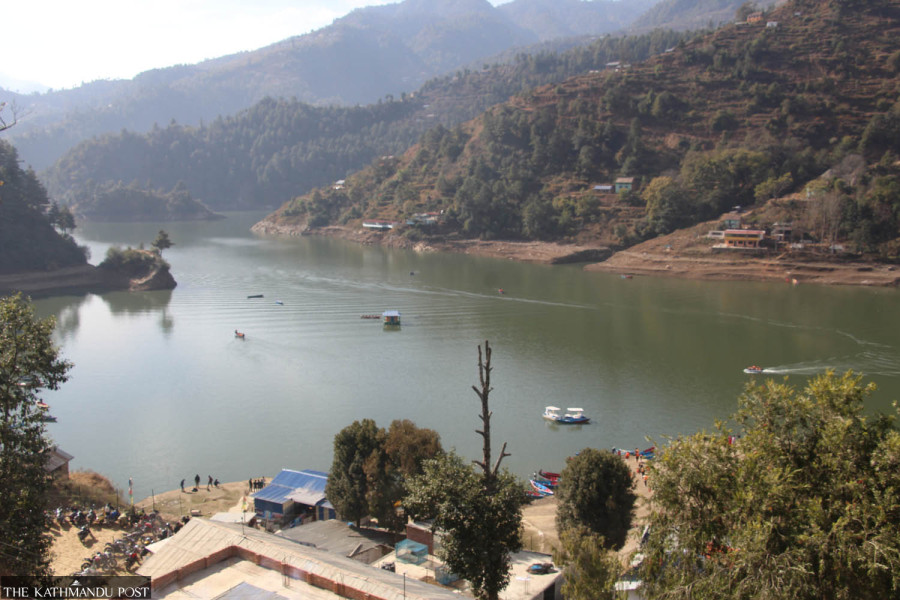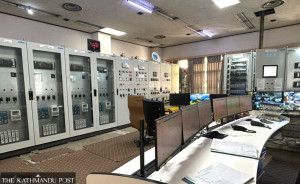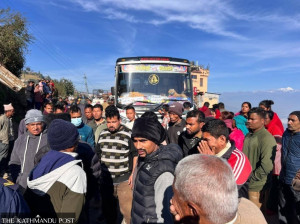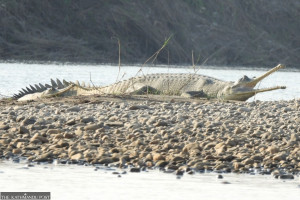Bagmati Province
Kulekhani reservoir remains below its storage capacity this year
The possibility the reservoir being filled up nears zero as monsoon has already left the country.
Pratap Bista
The reservoir of Kulekhani Hydropower Project, the country’s only reservoir type power plant, has remained below its storage capacity this year.
The possibility of filling up the reservoir nears zero as monsoon, which causes almost 90 percent rains in Nepal, has already left the country. Around seven metres of water is yet to be filled up.
Kulekhani’s reservoir would have been filled up as of now unless the power project generated electricity in June and July, said Dhirendra Chaudhary, chief of Kulekhani Hydropower Project-I. “All three units of Kulekhani Hydropower Project were operated in June and July with the view that the reservoir would overflow during the rainy season,” he said.
Kulekhani-I, II and III have the installed capacity of generating 60, 32 and 14 mega watts, respectively. All three power projects were operated from 15 to 20 hours on a daily basis in June-July.
The reservoir, spanning seven kilometres in length and 300 metres wide, was built to hold 1,530 metres of water as up to 1,484 metres of water can be used to generate electricity. Water level was at 1,522.40 metres in the reservoir at 4pm on Saturday. According to officials, the water level in the reservoir was 1,525.5 metres during this time last year.
“It stopped raining heavily in the water catchment areas of the reservoir this season,” said a senior technician at the Kulekhani-I requesting anonymity. “The reservoir possibly remains below its storage capacity this year.”
He, however, said that there won’t be any problem with electricity in the dry season this year.
On July 16, the water level dropped to 1,495.4 metres, this year’s lowest. According to the power project officials, the water level keeps on increasing in the monsoon season and rises by around eight centimetres on a daily basis now.
Daman, Palung, Bajrabarahi, Chitlang of Thaha Municipality and Markhu as well as Phakhel of Indrasarowar Rural Municipality of Makwanpur district are the water catchment area of Kulekhani, the biggest artificial reservoir in the country.
Kulekhani Hydropower Project-I came into operation in 1982. The reservoir initially had its capacity of storing 85.3 million cubic metres of water. However, the capacity has dwindled to 59.99 million cubic metres now due to collection of debris on the reservoir bed.
According to the technicians, the electricity generation capacity has also decreased with dwindling water storage capacity of the reservoir. A total of 211.1 million units of electricity could be generated with the water stored in the reservoir when it came into operation around 41 years ago. But the power generation capacity plunged to around 144.7 million units now due to siltation.
“Around 170,000 cubic metres of debris including sand, soil, stones and foliage have accumulated on the bottom of the reservoir,” said an engineer of Kulekhani-I, demanding the debris be dredged out from the reservoir. “The increasing level of the reservoir will certainly affect the capacity of three power projects.”
Kulekhani hydel projects, owned by the Nepal Electricity Authority, operate Nepal’s only reservoir plant and its cascades at full capacity usually during the dry season when the output of the run-of-the-river projects is low.




 7.12°C Kathmandu
7.12°C Kathmandu













